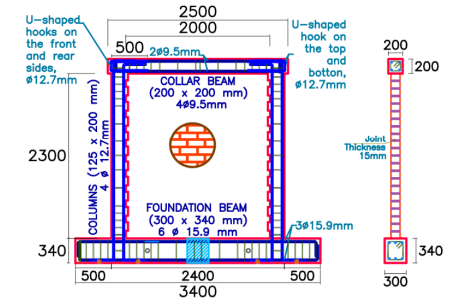Daniel Quiun and Lady Luza
i Professor, Pontificia Universidad Católica del Perú, Lima, Perú, dquiun@pucp.edu.pe
ii Master’s Student, Civil Engineering Program, Pontificia Universidad Católica del Perú, Lima, Perú, lady.luzap@pucp.edu.pe
ABSTRACT
A large number of informal housing buildings in Perú are built using perforated clay bricks or concrete blocks for confined masonry structural walls. The Masonry Code specifies that structural walls must be constructed with solid bricks (less than 30% of holes in the bed area). However, the lack of supervision, the desire to minimize costs, the general lack of seismic conscience of the owners, among other factors, explain the use of inadequate perforated bricks (more than 45% of holes in the bed area) for bearing walls of buildings up to 5 stories. The brittle failure of the masonry made with such units make them vulnerable under the combined action of gravity and seismic loads. Several experimental projects have been conducted to study reinforcing techniques to enhance the strength of these structures. In this project a confined masonry wall with an axial load equivalent to two stories, was subjected to a cyclic lateral load until shear failure occurred. Then, the wall was repaired and reinforced with jacketing of welded wire mesh on both surfaces. The retrofitted wall was tested under the same conditions as the original one, with improved behavior, a flexural failure, and an increase of lateral load of 40%. The retrofitting technique proved to be efficient and could be used in real buildings to increase and enhance their structural safety.
KEYWORDS: Confined masonry, hollow bricks, cyclic load test, retrofitting, wire mesh.
056-Quiun.pdf



